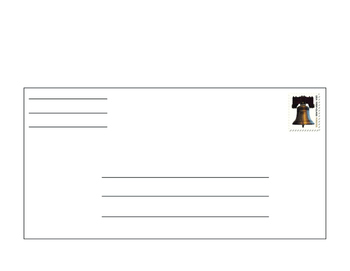

- #Addressing an envelope worksheet for kids how to#
- #Addressing an envelope worksheet for kids full#
- #Addressing an envelope worksheet for kids professional#
All formal letters begin with “Dear” followed by the name of the recipient. One space after this address comes the greeting.Two spaces after the date, on the same side, write the recipient’s name and address.
#Addressing an envelope worksheet for kids full#
The start of a formal letter should begin with your full name and address in the left hand corner.Here are seven basic guidelines for writing a formal letter: When writing a formal letter it’s important to use the correct salutation for the situation. The most common situation where a formal letter is used is when applying for a job or anything related to a profession such as a reference letter, cover letter, business letter, or resignation letters.
#Addressing an envelope worksheet for kids how to#
How to write a formal letterįormal letters are generally reserved for when the intention is to impress the recipient. You’ll also be signing up to my email list where I share advice about how to peacefully raise self-sufficient kids. “Love” could be an appropriate sign-off for a relative but inappropriate for your teacher, for example.Ĭlick the images below to get a copy of this list. Similar to the greeting, you should keep in mind who you’re writing to. A few common ones include “Sincerely”, “Warm Regards”, “Love” or “Best”.
#Addressing an envelope worksheet for kids professional#
But it’s still important for them to realize that the formal style is expected in a professional setting. Our children probably won’t have a reason to use the formal letter writing style until they’re applying to jobs. This will determine which type of letter to write. Important considerations before writing a letterīefore jumping into how to write different types of letters, it’s important to consider who the letter is for and what the purpose of the letter is. We can introduce our kids to this special and increasingly rare practice by encouraging them to write thank you notes, informal letters to friends and relatives, and for older teens, more formal letters for job applications. They chose special paper, wrote a message that isn’t easy to edit (as it would be online) and then addressed and stamped the envelope and placed it in the mail.

It means that the sender took the time to craft a note especially for the recipient. In the age of email and texts, getting a handwritten letter in the mail makes anyone feel special. Why handwritten letters are special and important Letter writing may, in some ways, be a left behind art form, but there are still many times in our lives when it’s good to know the basics of proper letter writing. I also distinctly remember the thrill of exchanging letters with pen pals I had connected with in Lithuania, South Africa and Togo, to name a few.Īnd while today our children connect with their friends through written word more than we did – through texts or social media – they have little practice writing handwritten letters. Or even the summer camp friends we kept in touch with over the school year. There were the letters we wrote to friends over the summer. Here are some tips for kids about when and how to write informal and formal letters.īack in our childhood we had multiple opportunities to practice writing letters.

Writing letters is becoming a bit of a lost art form.


 0 kommentar(er)
0 kommentar(er)
